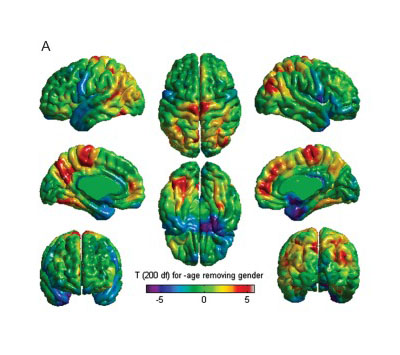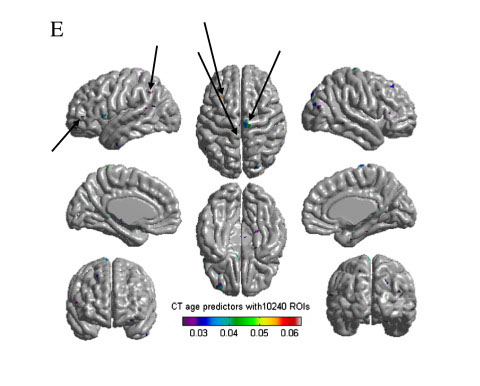
Imaging structural covariance in the development of intelligence
Verbal and non-verbal intelligence in children is highly correlated, and thus, it has been difficult to differentiate their neural substrates. Nevertheless, recent studies have shown that verbal and non-verbal intelligence can be dissociated and focal cortical regions corresponding to each have been demonstrated. However, the pattern of structural covariance corresponding to verbal and non-verbal intelligence remains unexplored.
Read More
Brain connectivity in normally developing children and adolescents
The developing human brain undergoes an astonishing sequence of events that continuously shape the structural and functional brain connectivity. Distinct regional variations in the timelines of maturational events (synaptogenesis and synaptic pruning) occurring at the synaptic level are reflected in brain measures at macroscopic resolution (cortical thickness and gray matter density).
Read More
Developmental changes in organization of structural brain networks
Recent findings from developmental neuroimaging studies suggest that the enhancement of cognitive processes during development may be the result of a fine-tuning of the structural and functional organization of brain with maturation. However, the details regarding the developmental trajectory of large-scale structural brain networks are not yet understood.
Read More
Prediction of brain maturity based on cortical thickness at different spatial resolutions
Several studies using magnetic resonance imaging (MRI) scans have shown developmental trajectories of cortical thickness. Cognitive milestones happen concurrently with these structural changes, and a delay in such changes has been implicated in developmental disorders such as attention-deficit/hyperactivity disorder (ADHD).
Read More
Heritable changes in regional cortical thickness with age
It is now well established that regional indices of brain structure such as cortical thickness, surface area or grey matter volume exhibit spatially variable patterns of heritability. However, a recent study found these patterns to change with age during development, a result supported by gene expression studies. Changes in heritability have not been investigated in adulthood so far and could have important implications in the study of heritability and genetic correlations in the brain as well as in the discovery of specific genes explaining them.
Read More
Childhood cognitive ability accounts for associations between cognitive ability and brain cortical thickness in old age
Associations between brain cortical tissue volume and cognitive function in old age are frequently interpreted as suggesting that preservation of cortical tissue is the foundation of successful cognitive aging. However, this association could also, in part, reflect a lifelong association between cognitive ability and cortical tissue.
Read More
